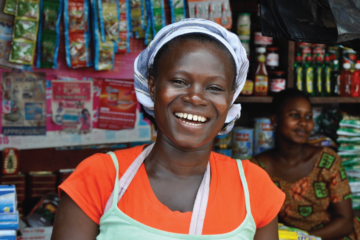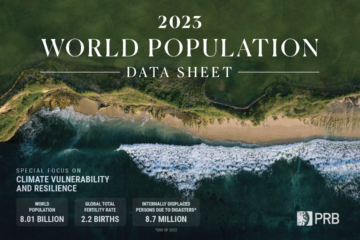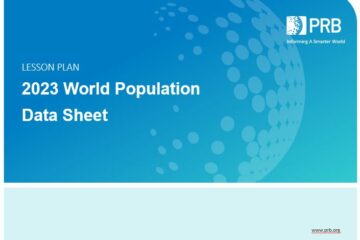- Central Statistical Authority (Ethiopia) and ORC Macro, Ethiopia Demographic and Health Survey 2000 (Addis Ababa, Ethiopia and Calverton, MD: Central Statistical Authority and ORC Macro, 2001).
- Pew Forum on Religion and Public Life, Mapping the Global Muslim Population (Washington, DC: Pew Forum on Religion and Public Life, 2009).
- Charles Teller, Ali Hassan, and Tesfayi Gebreselassie, “Muslim Identity or Ethnicity Hindering a Rural Fertility Transition? A Complex Web of Social, Cultural, and Community Factors in Ethiopia,” prepared for the IUSSP International Population Conference in Marrakech, Morocco, in October 2009.
- Central Statistical Agency (Ethiopia) and ORC Macro, Ethiopia Demographic and Health Survey 2005 (Addis Ababa, Ethiopia and Calverton, MD: Central Statistical Agency and ORC Macro, 2006).

Religious, Ethnic, and Regional Factors of High Fertility in Ethiopia
Date
November 23, 2009
This article is based on the paper, “Muslim Identity or Ethnicity Hindering a Rural Fertility Transition? A Complex Web of Social, Cultural, and Community Factors in Ethiopia,” by Charles Teller, Ali Hassan, and Tesfayi Gebreselassie, prepared for the IUSSP International Population Conference in Marrakech, Morocco, in October 2009.
(December 2009) The demographic transition from high to low fertility in rural areas, usually associated with socioeconomic change, has lagged far behind urban areas in most of sub-Saharan Africa. In Ethiopia, the lag is striking. The total fertility rate (TFR) has fallen below replacement level (2.1 children per woman) in the capital Addis Ababa, but is 3.5 children per woman in the towns, and remains above 6 children per women in rural areas where 84 percent of the population resides.1
One commonly reads in the popular media that Muslim fertility remains higher than Christian fertility in developing countries with significant Muslim minority populations. Moreover, Islam is perceived to be a pronatalist religion, thus hindering the transition to lower fertility. A recent study documents that Ethiopia currently has the second-largest Muslim population in sub-Saharan Africa.2 However, there is a perception in Ethiopia that there is more rapid population growth among the Muslims than among Christians, potentially tipping the balance toward Ethiopia becoming a majority-Muslim country soon.3 However, there is little research and few reliable assessments in Ethiopia on the demography of religion.
Is fertility higher among Muslims than other religions in Ethiopia, even when holding socioeconomic status and rural-urban residence constant? What is the relative influence of education, region, ethnicity, and social identity?
The main sources of data in this article are representative national demographic and health surveys, population censuses, specialized research on ethno-religious and community factors in fertility, and qualitative studies in which the authors have participated since 1990.
Demographic Trends and Trajectories
The number of Muslims in Ethiopia rose from 17.4 million in 1994 to 25 million in 2007.4 Islam is the second-largest religious group in Ethiopia, at 34 percent, with Orthodox Christians at 44 percent and Protestant Christians at 19 percent. In fact, the percentage of Muslims has remained the same since the 1994 census. The highest increase has occurred in the Protestant population (from 14 percent to 19 percent). The increase in the population among Muslims has been faster in urban areas compared with rural areas: The percentage increase between 1994 and 2007 in the Muslim population has been 76 percent in urban areas versus 40 percent in rural areas.
Trends in Fertility by Religion
Fertility trends by religious group show that Muslim levels fall between the Orthodox Christian and Protestant Christian levels. The latter group, with the highest growth rates, is assessed to have little decline in fertility during the 1990s (see table).
Mean Number of Children Ever Born to Women Ages 45 to 49 by Religion, 1990, 1994, and 1998
| Sources | Muslim | Orthodox | Other Religions | Protestant |
|---|---|---|---|---|
| 1990—National Family and Fertility Survey | 7.0 | 6.4 | 6.9 | 7.2 |
| 1994—Census | 7.4 | 6.0 | 6.1 | 6.2 |
| 1998—Health and Nutrition Survey | 6.8 | 6.3 | 6.7 | 7.1 |
Source: Patrizia Farina et al., Fertility and Family Change in Ethiopia (Addis Ababa: Central Statistical Authority, 2001).
Using the 2005 Ethiopia Demographic and Health Survey, we compared fertility differentials of regions with a high proportion of Muslims (Afar, Somali, and Harar) and regions with high a proportion of Ethiopian Orthodox Christians (Addis Ababa, Amhara, Tigrayi, Southern Nations and Nationalities Peoples Region, and Gambela). Fertility is much higher in Somali, but Afar is similar to the Orthodox Christian region fertility. This is surprising since fertility norms (such as ideal family size) are much higher and contraceptive use is lower in Afar than in Tigrayi and Amhara. However, the median age at marriage is higher in Somali than in the other regions, and is very low in Amhara.
The results of our analysis of TFR by religion, education, and minority group status region were:
- Muslim fertility is the lowest (5.0) in regions where Muslims are a distinct minority (Amhara and Tigrayi), and where there is no difference between Muslim and Christian TFR.
- Muslim fertility is the highest (7.2) in the regions with equal Muslim and Christian populations (Oromia and Benishangul-Gumuz), around two children more than Christians.
- Controlling for education in Oromia, noneducated Muslims have the highest TFR (7.7) than noneducated Christians (6.1).
With all these factors in play, we analyzed fertility (measured by children ever born) on religion, controlling for rural residence, early age at marriage, education and wealth. Among others, region of residence is a significant factor associated with fertility: Muslims in majority regions have higher fertility than Christians in the same region, but they do not have higher fertility in the minority regions.
Conclusions
The complex web of traditional culture, regional differences, rural community structure, and ethnicity strongly influences the lagging rural fertility transition, rapid population growth, and uneven geographic distribution in both major religions in Ethiopia. The role of religious identity is not as influential on fertility as other sociocultural factors. The fertility transition is hindered more by the lack of education, rural residence, and early marriage tradition. Residing in a region with Muslim majority group status raises fertility, while minority status depresses it, and intermediate-status regions (those with nearly equal Muslim and Christian populations) have the highest overall fertility. In addition, higher Muslim fertility may be related to specific Somali and Oromo ethnicity and to regional factors, as well as to greater marital stability, pastoral livelihoods, and less access to essential services.
While research on the sociology of religion and fertility remains scarce, some of the socioeconomic, cultural, and religious factors that appear to influence the fertility transition are:
- Education of girls: especially secondary-level education.
- Later age in transitions to adulthood: education, labor force entry, age of marriage, birth spacing.
- Urbanization: In predominantly Orthodox Christian northern Ethiopia, almost all Muslim growth was in urban areas.
- Region, livelihoods, and ethnicity: TFR is higher among Muslims with no education than among Christians with no education (7.7 compared with 6.1) in the largest region, Oromia.
The updated and revised National Population Policy Plan of Action proposes to address many of these high fertility norms and low access to essential services. It will be planned and implemented through region-specific social, health, and human development, women’s empowerment and cultural change, and urbanization, all couched in the context of the highest priority poverty and food insecurity reduction strategies.
Charles Teller is senior visiting scholar at the Population Reference Bureau. Tesfayi Gebreselassie is project manager at ICF Macro.






